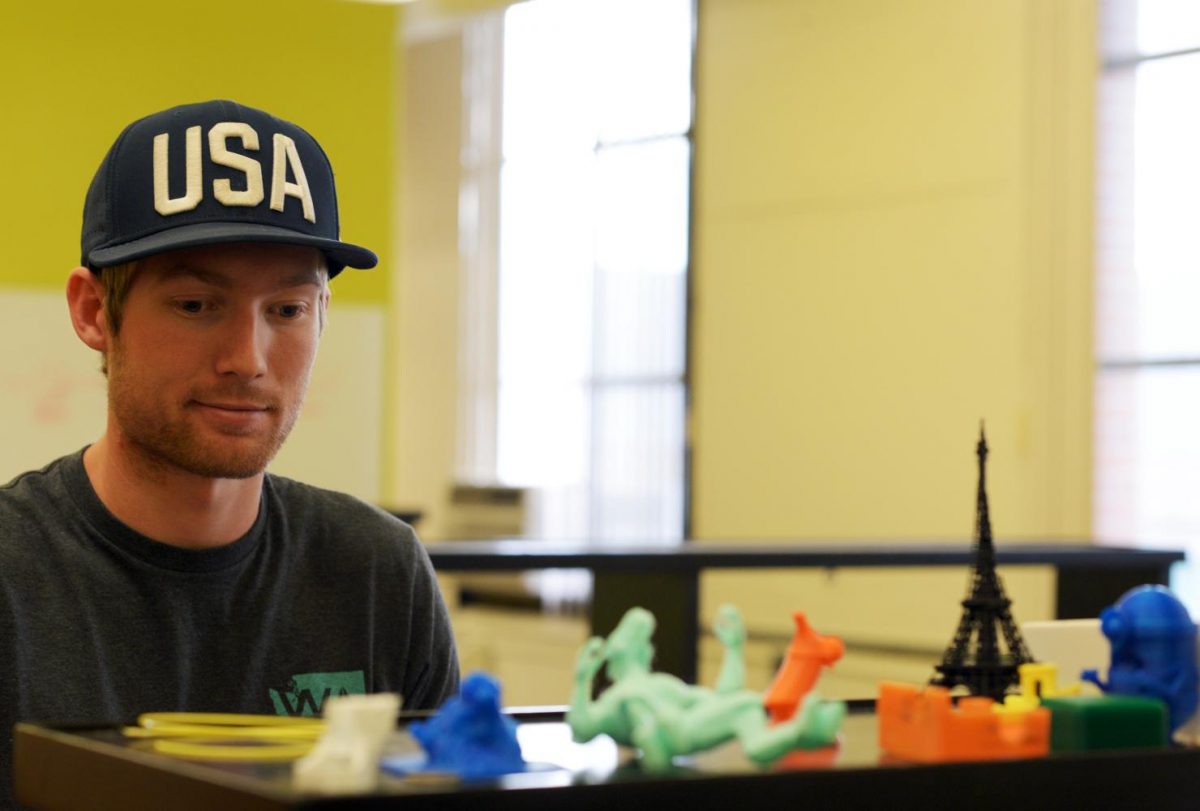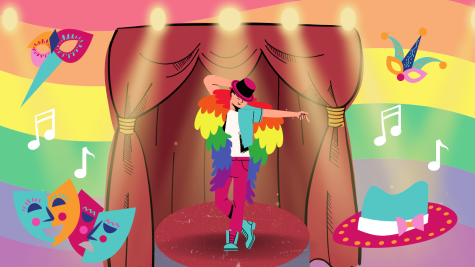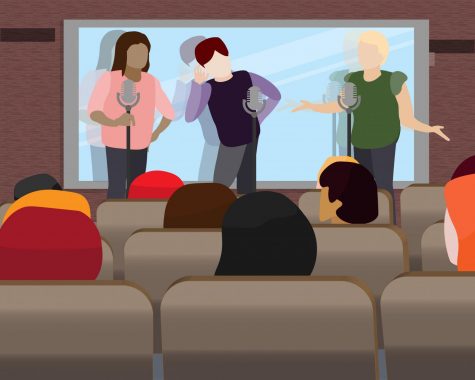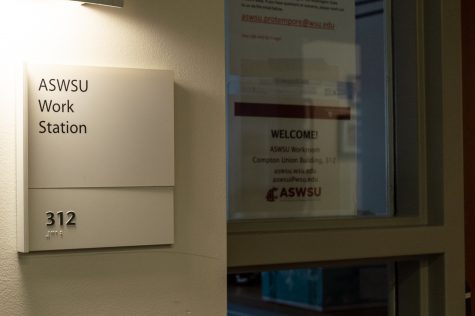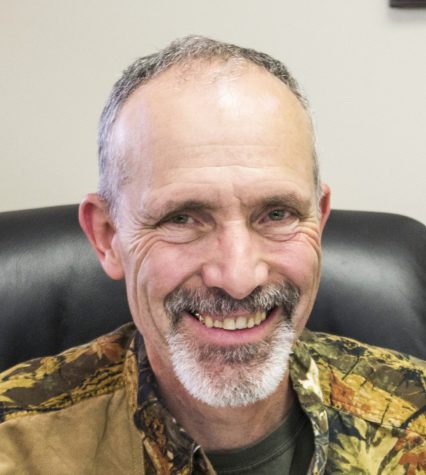3-D Printing Club to build recycling program
Members can use the machines creatively or for school projects
ZACH RUBIO | The Daily Evergreen
Club President John Zender talks about how the 3-D printers work Friday.
September 25, 2017
The 3-D Printing Club allows students to develop real world experience and gives them the chance to make a difference with advanced machines available for creative design.
Alumnus Charles Carver founded the 3-D Printing Club in 2014 so students could get ahead in this rapidly developing field, club President John Zender said.
To operate a printer, the user starts with a roll of raw material, such as plastic, which goes into a nozzle and is melted like a hot glue gun, Zender said. The printer builds the object one layer at a time, as series of 2-D images stack on top of each other to create an object.
The club has six 3-D printers, which they maintain and repair themselves, he said. Right now, they are collecting donations to buy a larger printer for bigger projects.
They are currently working on developing a recycling program using a Filastruder, a device that breaks down plastics into usable material for 3-D printing, Zender said. The material is then stored on a spool ready to use when needed.
Zender said the club members hope they can boost recycling and improve sustainability on campus with their Filastruder, This device allows them to use water bottles and grind them into material, which can go toward university and community projects.
“It’s a rising hot topic, we have limited access, but it shouldn’t be like that because one of our alumni owns the largest 3-D printing company in the world,” graduate adviser Yu Chung Chang said.
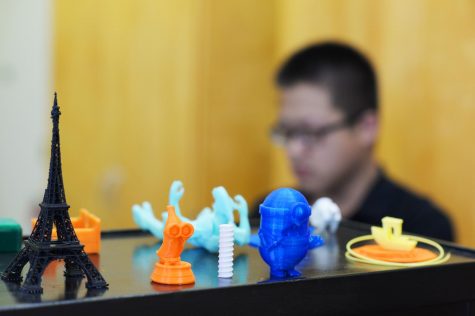
A row of 3-D printed figures displayed and created by 3-D Printing Club members.
The club also tries to do a lot of outreach, Chang said. They go to the Palouse Discovery Science Center frequently to teach children about 3-D printing.
Originally, the club only printed trinkets or models, Zender said. Now, they have expanded into making functional parts used in research or prototypes for senior projects.
“School printers usually take a bit longer because they’re supposed to be more accurate,” Zender said. “But students have to be more delicate with the whole process, where we know how to fix ours if they break and material is cheap for us.”
Previously, the club tried making lightweight frames for drones that also had enough durability to survive crashes, he said.
They have also created a chocolate mold with the Cougar logo on it, and the mold had to be strong enough to withstand the vacuum seal process on the chocolate packages, Zender said.
“If I see myself in the future, if I’m working on a machine, I want to know how to take it apart and fix it, Zender said, “or to design a better machine with more efficient parts.”
The club leaders ask that members learn how to use the machines beforehand, Zender said. They have no club fee for the first semester; members get to use the machines any time they like and connect with others who have the same interests.
“The best thing is freedom,” Zender said. “We don’t make rules on what you can do. It’s a club where you can walk in, use the printer or bring up a project idea for what we want to do next as a club.”
The 3-D Printing Club meets at 6 p.m. every Sunday in Dana Hall, Room 216. Interested students can check out their Facebook page for more details on specific meetings.


